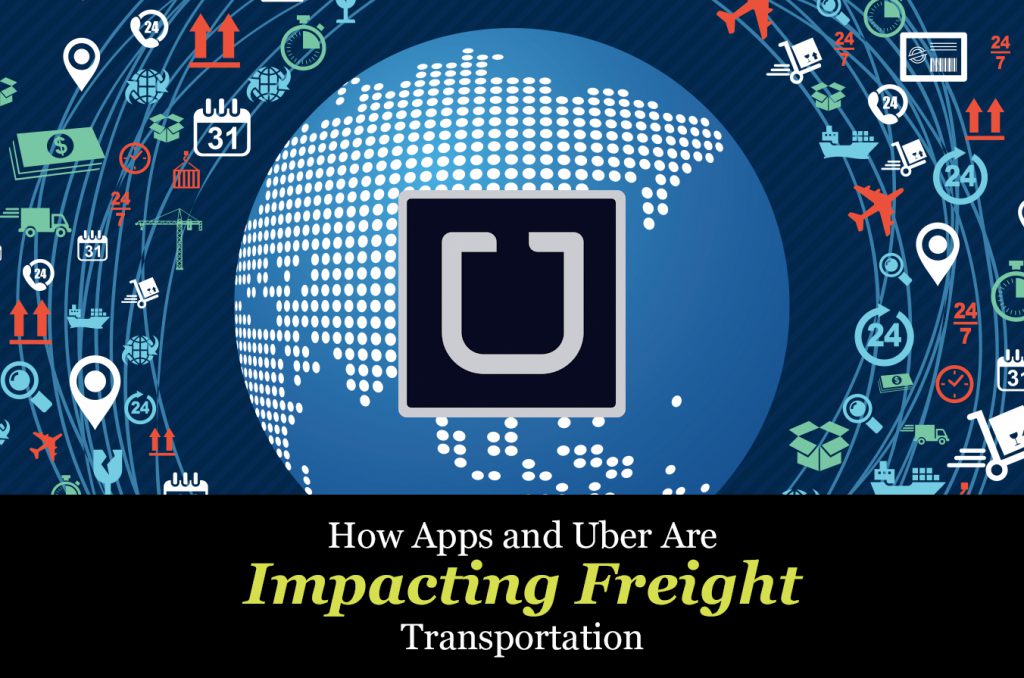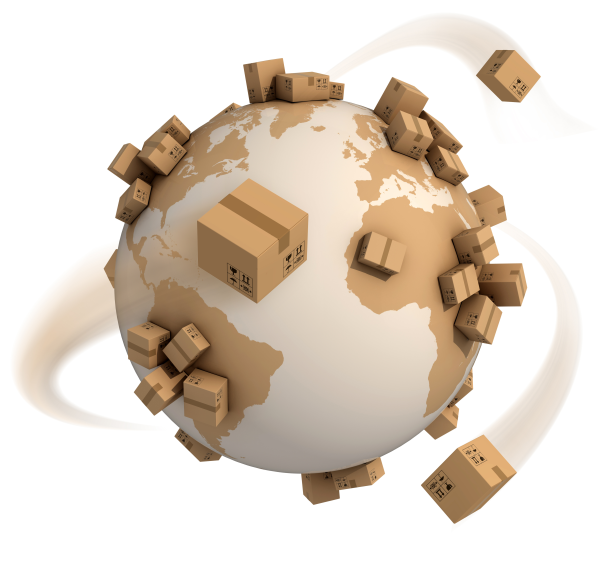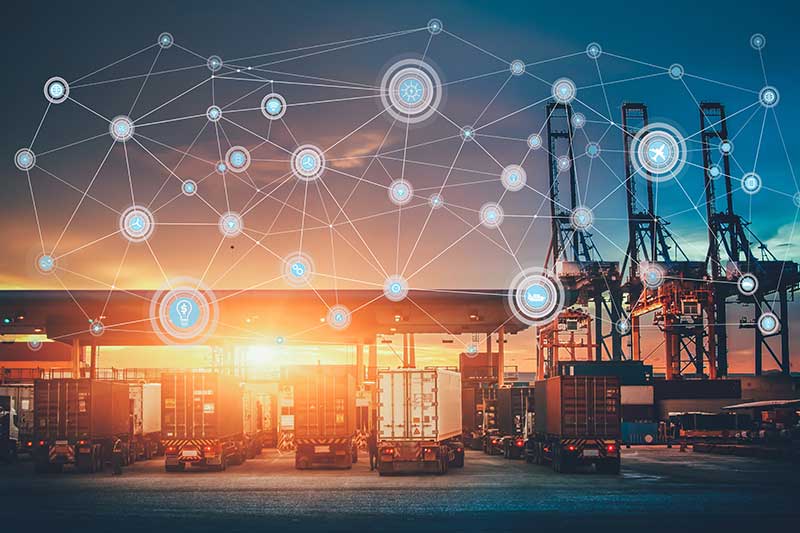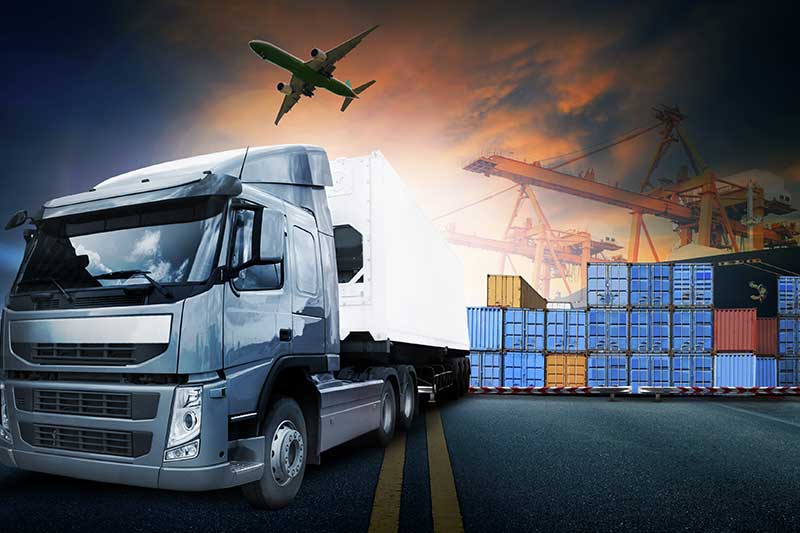Category: Technology
What You Need To Know About Logistics Management Software
There can be so many choices of software when it comes to logistics management that it’s hard to decide which one is best. What’s perfect for you may not be ideal for another company, and vice versa. Which software you choose could have a drastic impact on your business, so you must choose wisely.
Let’s take a look at a little bit of information as it applies to logistics management software and how to make that wise choice.
Success in This Competitive World
Internal efficiency is a huge factor in the success of today’s enterprise. Of course, the delight of its customers is also essential. Seamless logistics and a well-oiled supply chain are important if a company is going to fulfill both of those goals. Without the right logistics management software, that can be difficult.
The Basics
What should logistics management software do? Basic functions include warehouse operations that enhance efficiency and productivity, improve customer satisfaction, and save money. Everything from inventory control to supply chain planning is covered by a comprehensive suite. Additional coverage will include transportation routine streamlining, slotting and shipping, packing, and other warehouse functions. A good software program enforces greater control over operations, improves transparency, and co-opts logistics tracking software.
Seamless Integration
There are stand-alone suites and also comprehensive suites. The latter covers all needed activities. If a comprehensive suite is not utilized, you must somehow be able to experience a seamless integration between the various suites classified as stand-alone.
Capabilities held by a top rated logistics management software would include the following:
- The capability to tap into other partners and all desired 3PL.
- Draw critical information.
- In the form of actionable information, make presentations to stakeholders.
Above and Beyond
Warehouse operations management is the core of logistics software. Helping maintain supply chain control and offering visibility is the job of logistics tracking software. But, to aid tactical planning, the offer of visibility must be surpassed with superb logistics tracking software.
What does success depend on?
- Easy to use dashboards delivered to the right stakeholders (preferably, through easy to use mobile apps that facilitate anytime, anywhere access)
- Integrating all critical solutions
- A well-integrated logistics software solution
As important as visibility is, however, a “what to do next insight” must be used in combination with visibility. Among today’s successful logistics players, embedded analytics is in high demand.
Advanced analytics tools will be needed as data and business becomes more complex.
Don’t Rock the Boat With Your Software
A good logistics software system will not disrupt operations already in existence. Review functionality features before choosing your software. Consider the following for each feature:
- What problems or issues will it solve?
- What are the benefits of bringing it to the table?
- Why is it needed?
- Additionally, be able to explain how this new software will combine with your current, existing logistics operations.
How to Solve All Your Logistics Problems in One Easy Step
With all of that said, there’s a much easier way to make sure that all of your logistics are taking care of. The knowledgeable representatives of STC Logistics can help with everything from crating and packing to warehousing and fulfillment – and everything in between.
Since 1992, we have been the go-to logistics company for numerous businesses. Our credentials include SmartWay, IATA, Globallink, CNS (an IATA company), the Transportation Security Administration, and more.
Contact us today if you have any questions or would like to find out how partnering with STC Logistics can be beneficial for you and your business.
What You Need To Know About NMFC Codes
In the logistics industry, topics about technology and chain efficiency are widely discussed. Oftentimes, certain technical lingo can be confusing for people who are not seasoned industry specialists or thought leaders. In this post, we are going to explain what NMFC codes are why they are important to companies in the freight and logistics industry.
What are NMFC Codes?
Regulators within the logistics industry, referred to as NMFTA (National Freight Traffic Association), created NMFC (National Motor Freight Classification) codes when they realized there was a need for more effective standardization. This body created a classification system for every type of freight in an effort to standardize freight pricing and establish fair measures.
The system has 18 different freight classes and it is catalogued with NMFC tariffs. Numbers between 50 and 500 are used to define the 18 freight classes, and are often used by carriers and shippers to set shipping rates.
Four primary factors that help to define a freight class include:
- Stowability: This refers to how easily a product’s dimensions can easily fit into the carrying container or vessel. If a product is extremely large, hazardous, or extra heavy, it can be difficult to stow on a trailer, thus raising costs. The higher the stowability, the lower the classification of the freight.
- Liability: Products that are fragile, refrigerated, or perishable pose a greater liability and so they are classified in a higher class.
- Ease of handling: When freight is easy to handle, it is classified in a lower class. If freight is difficult to handle, it is placed in a higher class.
- Density: The higher the amount of space a shipment takes up on a trailer relative to its weight, the higher the class it is placed in.
Carriers and shippers use these factors to determine the cost of moving freight. If the freight cannot be accurately classified, it may lead to dangerous situations and inefficiencies.
How to Find the Correct NMFC Number
In order to find the NMFC number to your specific shipment, you need to consult with a freight company. The freight company will help you classify the shipment, which will then help to determine the shipping costs. It is important to deal with transport providers who use provisions of the NMFC because they are the only ones allowed to participate in the classification system. The disadvantage of using freight companies, which do not include tariff provisions of the NMFC in contracts, is that they can set rates as they see fit.
The Importance of the NMFC Number
Before shipping your packages, always ensure that you find out the NMFC number that applies to your intrastate or foreign shipment. This number will ensure that you are fairly charged for the shipments. If you don’t have the NMFC number, you will not have a baseline to determine if you are being overcharged for shipping.
Tech Trends That Are Changing The Freight Shipping Industry
The latest advancements in technology and the logistics industry have not always had a close-knit relationship. Their reluctance or inability to capitalize on technology has cost the logistics industry in several ways including the following:
- slowed freight shipping times
- negatively affected efficiency
- trucking congestion
- problems in ports, and more
But to maximize security and efficiency and streamline processes involved in logistics, the industry will have to perk up, take notice, and get in the game. If they’re going to level the playing field between themselves and other businesses, there are a handful of new trends that should catch the eye and interest of every logistics CO and be a part of their future plans – and soon!
The Adoption of Blockchain
Blockchain is a technology that is often misunderstood but much-hyped. It’s already making an impact for those who have adopted it in the world of logistics. One logistics company, for instance, came up with the solution of blockchain to secure and streamline information exchanges between more than 90 organizations and companies involved in the activity of global shipping. Blockchain driven smart contracts are what the program is built upon. The program involves terminal and port operators, customs brokers, carriers, customs officials, and some freight forwarders.
Customer-Centricity
While catering to individuals, businesses, and companies with the need for shipping, the freight forwarding sector has traditionally been focused on process. But as more shipping services are needed by smaller businesses, and globalization takes hold, the need for freight forwarders and shipping services is forcing them to take an approach other than the conventional one. They now find themselves putting, at the forefront of modernization efforts, their customer’s perception.
As an example, customer service can be greatly enhanced through the use of digital solutions developing media marketing strategies, strategic content marketing, user-friendly websites, and the offer of instant shipping quotes.
Finding Solutions Through the “Internet of Things”
First things first, what is the Internet of Things? Here’s the easy answer: sometimes abbreviated as IoT, it includes all devices that are web-enabled and gather, forward, and act according to data collected from environments around them. To do this, they use communication hardware, processors, and embedded sensors.
If you control your household lights, locks, heat, etc. through your phone – you are using the Internet of Things.
This can be exceedingly useful where shipping data is concerned to track and analyze all things related to products and transport.
Real-Time Data – Use It
To ensure that your resources are used more efficiently, and to improve coordination and scheduling, real-time information should be utilized. Through data-sharing tools, this is currently being used in ports to monitor arrival and departure times, and more. The flow of cargo has been improved, thereby reducing port congestion. By planning and deploying equipment and labor, efficiency has been increased and the flow of cargo bettered.
Cybersecurity Must Be a Prime Focus
If you listen to the news or surf the net at all, you’re probably well aware of the problems some companies are facing with hackers and identity theft. Cybersecurity is a hot button today, and for good reason. A company’s infrastructure can be completely crippled by a cyber attack. Ports around the globe would be affected as well. Freight forwarders must adopt faster, more responsive digital solutions rather than sticking with the traditional processes they’ve always used. As companies implement brand-new systems, they must integrate cyber-security.
Confused yet? Contact us at STC Logistics and let us explain all of these trends in a manner that is more comprehendible and personally applicable to your particular situation.
Top Tips to Ship Sensitive Life Sciences Cargo
The companies responsible for life science products frequently have to have their goods transported throughout the world. This poses considerable shipping challenges. Often, stringent regulations apply to these types of shipments. The well-being and health of the population in general can be directly impacted by these products. Sometimes, mishandling products like this mean the difference between life and death. So, sensitive life sciences cargo needs precise, special attention when being shipped.
What Is Life Science?
The term “life sciences” is an all-encompassing term referring to companies involved in the following fields:
- Institutions
- Organizations
- Biomedical devices
- Environmental
- Food processing
- Cosmeceuticals
- Nutraceuticals
- Life system technologies
- Biomedical technologies
- Pharmaceuticals
- Biotechnology and more
These life science companies dedicate the bulk of their energy to differing stages of commercialization, technology transfer, development, and research.
Life Science Products
Now that you have an idea of what life sciences refers to, what are some of the products that could be involved?
Far too many to list here, a very small example of products that fall under the life sciences classification are as follows:
- Chemicals
- Cell cultureware
- Trays, containers, beakers, bottles, and other liquid handling products
- Razor blades, surgical blades
- X-ray accessories and films
- DNA kits
- Gloves, tape, stickers, labels, etc. for biotech and other scientific research
- Petri dishes and tissue culture products
- Isolation kits and more
Why Shipping Life Science Products Is Challenging
In addition to the initially mentioned challenges, the shipping of life science products can offer other issues that need to be dealt with. Frequently, products shipped under this classification can be regarded as hazardous and are temperature sensitive, time sensitive, and delicate.
If, for example, incorrect handling or improper shipping of pharmaceutical products takes place, the pharmaceuticals themselves may become harmful or ineffective. Clearly, this will not do.
So, shipments of life science goods must result in delivered goods that are in perfect condition when they arrive. Plus, they must arrive on time in order for the shippers and life science companies to be happy and make money.
Life Science Shipping – Six Steps
The following steps will help to ensure that life science shipments are taken care of on time and safely:
- A compliance program must be established.
- Manual paperwork should be eliminated.
- The correct packaging must be chosen.
- Instructions must be clear and succinct.
- The appropriate transportation partnering must be present (a reliable, reputable 3PL or logistics company will go a long way here).
- Goods must be tracked.
More Challenges on the Horizon
If you thought that there were already a lot of challenges involved in the life sciences shipping industry, hold on! The future of life sciences transport/shipping will involve the following:
- Coming changes to regulatory constraints and requirements
- Direct to-patient deliveries
- Patient-centric approaches
- Biologics and other new treatments
- Increasing importance of emerging markets
Are you, as a shipper, ready for the future of life science products?
If you answered “no”, “maybe”, or “I don’t know” to that question, or if you are having difficulties with warehousing, general shipping, or any other logistics related topics, STC Logistics can come to your rescue. We deal with all of the above and more on a daily basis and have been doing so since 1992. Contact us today for more information.
10 Ways To Improve Supply Chain Visibility
We live in a world where everybody wants what they want, when they want it. That usually ends up being now! This is a world in which near immediate delivery of goods and real-time visibility is of the utmost importance to consumers. Businesses are having to reevaluate their operations because supply chain disruptions are being experienced in abundance.
How can companies improve supply chain visibility? A more efficient supply chain must ultimately be ensured. But is that easier said than done?
Let’s take a look at some tips from the experts as to how to improve supply chain visibility and better your business in the process.
Visibility
Look at things from your customer’s or end user’s point of view. What does visibility mean to them? Define it and figure out what it will mean for you and your company. Specify what type of experience it is that you want your customers to have.
Pick a Connectivity Platform
Key players should be connected through your digital platform. That’s going to mean a platform that is easily accessed by all intended parties and one that is technologically agnostic.
Talent
Both new talent and new processes will be enabled by new technology. Recruit people that have high-quality data interpreting skills and who are analytically inclined.
Standardize and Manage Data
It is imperative to have a clear data strategy. Defining and cleansing consistent data models means that you will be able to translate and utilize data into information that is more meaningful.
Information Trustworthiness
Whatever your data is, you must be able to believe it. The entities with whom you exchange information, the security, and the information itself must be trustworthy. Particularly when discussing financial information exchange, you must find ways to ensure security and confirm confidentiality.
Figures – Interpretation and Leverage
You have to know what problems to solve before you can figure out ways to improve. So that, before they occur, you can proactively manage exceptions, you must have the right data. Only then will you be able to keep your customers happy and save your business money and time.
Decision-Making
Once improvement opportunities are identified, needs can be responded to. You can better execute solutions and make decisions sufficiently when you know where, across your supply chain, everything is located.
Real-Time Visibility
This can also be referred to as transparency. At an accelerated rate, the size and frequency of data exchange is increasing dramatically. It is imperative (in real time) to be able to leverage this data. Key enablers here are the following:
- For solving key business problems, what data is most critical?
- What does the data mean?
- When exceptions occur, what will you do?
An Integration Platform That Is Neutral
Incorporating a proven, reputable Integration Platform assures that you will have the capacity to accelerate new capability development, quickly adjust, and have the ability to flex down or up. Regardless of in-play execution systems, it also means that companies can easily integrate.
Extended Ecosystem Development
If you can accomplish all of the above, you’re going to feel pretty good about yourself and your business. Unfortunately, that can also provide you with a false sense of security. In order to manage your supply chain, you’re going to need a collaborative approach in today’s “new and improved” digital environment. In order to bring, into a single environment, the best of all your partner’s capabilities, you must develop an extended ecosystem. This is crucial!
One of the best partners you can have, as a business owner, is STC Logistics. Our capabilities include distributions, rollouts, packing, crating, installations, fulfillment, warehousing, shipping, and more. We are highly familiar with today’s high-tech procedures and capabilities. Contact us today to find out more.
Understanding How Oceanic Tug-Barges Have Evolved
Even though the North American coastline contains railway lines that connect numerous coastal cities, coastal maritime transportation remains the preferred method for many in the bulk freight transportation market. Oceanic tug-barges play one small but necessary part in the journey of a product from manufacturer all the way to the hands of the consumer.
One of the reasons that oceanic transportation might be favored over railway is cost. Loading railway cars with heavy, bulky loads and pushing them to the maximum means massive wear and tear on railway rolling stock and the infrastructure. But, while incurring the same cost of only a single train, a barge can carry the same bulk freight volume/payload. (The barge in question here would likely measure 65 feet by 105 feet.)
But big, bulky barges cannot operate well on their own from dock to dock. They require assistance. That’s where tug-barges come in.
Back in the Day
Long before the high-tech ships, barges, and boats of today, transportation of cargo was done by steam powered boats or wind powered vessels. It was simply a cost-saving venture to use a tugboat to navigate and push a river vessel. This was particularly applicable if a greater payload could be loaded aboard the transport vessel due to the tug doing the navigating. (In many cases, this meant that the vessel could be loaded with more cargo because less room was needed for coal and potable water to create steam.)
Business Is Booming
As the business of oceanic transport caught on, barges became deeper, longer, and wider. This, in addition to providing more space for cargo, also made them capable of carrying their freight over long distances because they could sail bigger waters. This of course, created a need for larger tug-barges that had a larger engine output, could maneuver larger barges, and could sail faster.
Technology Makes Its Mark
Azipod technology is a term that refers to ships that are steerable and include electronically driven propellers. It is now possible, thanks to modern technology, to generate the propulsive electric power needed for a companion vessel while also using a remote engine.
The barge includes the Azipod unit for steering and propulsion and is attached the tug-barge companion vessel, which also includes a level of self-propulsive capability. Between the technology carrying barge and the companion vessel are power cables.
Computer-controlled automated navigation has changed the waterway transportation industry forever. It is even possible now to steer and control independently a combination of several barges and tugs through the tightest of river waterways. This demonstration of technology will hopefully lead to the same capabilities being present in an adaptation conducive to ocean service.
More Than Just Freight Transport?
So impressive is this technology that it may soon be adopted by the cruise line industry! On occasion, cruise ships become stranded due to total engine failure. Until now, even with several tugs to move the stricken vessel, towing cables were destroyed. But, with this newest technology, stricken cruise ships may be able to find a rescue thanks to massive amounts of electric power through a power station-containing tugboat.
STC Logistics can assist you with your overseas shipping needs and so much more. We are experienced and reliable in the area of global transportation via ocean and air, and all things logistics.
4 Ways to Grow Your Global Ecommerce Retail Company
It’s not an easy process to develop a global ecommerce shopping platform for your retail business. Retailers understand that everything begins with the consumer; they are the ones who go through the shopping experience from start to finish and with an ever-increasing amount of interruptions during the buying process, retailers must adapt to survive and thrive.
MultichannelMerchant.com provides four tips for retailers to grow their global ecommerce business here.
How Apps and Uber Are Impacting Freight Transportation

Technological advancements are undoubtedly impacting the transportation industry. Let’s take the rise of Uber as an example. If you are unfamiliar with Uber, it’s used as an alternate to taxi services. People download the app on their smartphones and plug in their desired location. Using technology, Uber connects them with a private driver who is nearby, and the payment is automatically deducted from the user’s bank account.
Uber is a popular method for people to get from point A to B because users like its convenience and competitive pricing. However, it’s also controversial. Critics point to their “surge pricing periods,” in which Uber charges more for busier times. Detractors also highlight safety and insurance issues. Pretty much anyone with a license can sign up to be an Uber driver as long as they pass a background check. Taxi drivers are also licensed to do so, while Uber drivers are not.
So Is This The Future of Freight Transportation?
While Uber is used for individuals, this concept has bigger implications for larger scale freight transportation. For example, some organizations have developed or are planning to develop similar-type apps for trucking.
Convoy is based out of Washington and bills itself as the Uber version for trucking. They use their technology to connect shippers with local carriers. According to an article in The Verge, “Convoy gives pre-approved carriers the option to accept or decline a job based on the listed price, which eliminates haggling — a hallmark of the trucking business.” New York-based Transfix serves as an online marketplace for freight.
So are apps and technology like this the future of the industry? Some people are arguing that the “uber-ization” of the trucking industry is a good thing. According to the American Trucking Association (ATA), trucking is valued as an $800 billion industry, and more than 3 million trucks trek out more than 100 billion miles annually. While there may be some room in the industry for these apps, there are major liabilities that come with this approach.
Think Logically and Consider the Pitfalls
When it comes to your shipments, there are more factors to consider than just price and location. Shippers must evaluate any potential damages to their brand and the importance of customer service in the event of any issues.
For example, you would have to assume the potential risk or damage from a drive that you have never used, but based on an app. For many of these new apps, carriers can sign up as long as they have basic qualifications such as insurance. However, many of them often overlook important aspects such as a driver’s history backed up by reliable data. Do you really want to get into a legal or branding quagmire in the event of an accident?
The Quality of 3PL Companies
3PL organizations provide many benefits to their clients including:
- Expedited freight capability
- Accurate transit estimates
- Flexibility
- Customer service
- Tracking controls
- Increased security
- Reliable deliveries
- Ability to meet specific situations and requirements
- White glove services
STC Logistics specializes in expedited freight logistics solutions. We are one of the top trusted logistics companies in NJ. To learn more about our services, click the button below!
Selecting the Best Freight Forwarding Software in 2016
The freight forwarding industry must deliver quality services at narrow profit margins. A large part of this requires companies to choose the most cutting-edge and updated technology and software to ensure operations are as streamlined as possible. Click here to find out the 10 questions you should ask when selecting the best freight forwarding software for your business.
Advanced Logistics Technology: The Benefits of Proprietary Logistics Services
 Whether you run a new or established business, you know how important it is to have your goods carefully prepared, shipped and arrive at their destination on time. Failure to do so can have a negative impact on your customers—and even more so on your business—when issues like delivery delays, damaged items and cost overruns. Your reputation suffers and you can lose out on revenue, resulting in a black eye to your bottom line.
Whether you run a new or established business, you know how important it is to have your goods carefully prepared, shipped and arrive at their destination on time. Failure to do so can have a negative impact on your customers—and even more so on your business—when issues like delivery delays, damaged items and cost overruns. Your reputation suffers and you can lose out on revenue, resulting in a black eye to your bottom line.
A New Advanced Logistics Technology
How do you choose the right 3PL provider for you? You can shop around for a logistics solution and review all of your options or quickly choose a 3PL provider and simply live with your choice, hoping your goods don’t get damaged by trial and error.
Rather than take a chance with just any 3PL provider, STC makes available a new technology for all of our clients. Electronic Logistics Format, also known as E.L.F., manages the logistics, shipping, and tracking of your freight, alongside our logistics team and allows for visibility and flexibility. This tool is a proprietary services logistics technology that supports traffic managers or anyone who handles major regional or nationwide distributions, pickup assembly services, and multi-location rollouts.
What the E.L.F. Logistics Technology Does
E.L.F. logistics technology helps you accomplish a number of tasks. First of all, this service coordinates every stage of your shipping order. You would send our logistics experts at STC a spreadsheet that contains your shipment’s information; we can receive information by EDI, Excel or any format you prefer to use. STC will then develop a customized rollout or a multi-destination distribution blueprint.
From there, STC Logistics uses the E.L.F. logistics technology to plan, organize, and arrange for the final delivery of your cargo. The shipment’s progress is also tracked and traced through its numerous steps, in conjunction with our expert customer service team; we will never lose sight of your goods.
Before your freight goes into transit, you will review and approve the logistics plan, pickup and delivery specifications, your pricing estimates, and the shipment’s delivery date. Everything is sorted out well before your shipment’s pickup is made. Preplanning is a key factor for a successful logistics design.
Your Own Mini-Website
 After your shipment’s order is approved, STC’s IT department publishes your E.L.F. logistics technology design to a web-based viewing area. This is your very own “mini-website” for the distribution project. Your web portal is linked directly to STC’s internal operating system and is updated in real-time. You’ll be able to see the status of any of your shipments as they happen and delivery POD’s as they arrive.
After your shipment’s order is approved, STC’s IT department publishes your E.L.F. logistics technology design to a web-based viewing area. This is your very own “mini-website” for the distribution project. Your web portal is linked directly to STC’s internal operating system and is updated in real-time. You’ll be able to see the status of any of your shipments as they happen and delivery POD’s as they arrive.
Any relevant parties you choose will be granted access to the “mini-website” and allow them to follow the status of your shipment. This way, everyone who you’ve appointed will see that the shipment is picked up, shipped, and arrived on time to the correct recipient.
The Benefits of Proprietary Logistics
When you partner with a 3PL provider like STC Logistics, you can enjoy the logistics technology benefits that you wouldn’t necessarily see from other logistics technology products. Consider these perks:
- Eliminates the confusion experienced when random shippers pick up and deliver your items. Using STC Logistics as an extension of your team keeps everything under one roof.
- Improves pick up times, length time in transit, and the actual delivery date and time by providing a schedule in advance.
- Reliable nationwide affiliates allow for consolidation of goods, TSA certified access to all airports and strong networks to meet your deadlines. We are all linked together through the system.
- You receive an entirely coordinated effort from the team to ensure that your shipment arrives safely, undamaged, and on time. Adjustments are easily made and updates are in real-time.
STC Logistics uses the very latest in advanced technology with its specialized Electronic Logistics Format logistics technology. For more information or to obtain a quote for your next shipment, contact us 24/7 at 800-547-4324. To learn more about the industries we specialize in, click the button below.
















